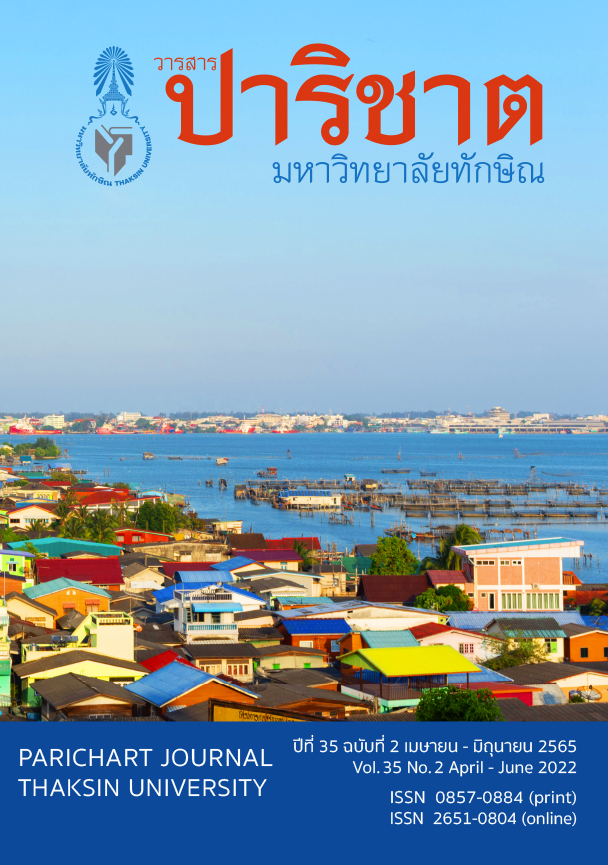Creating Performing Arts Based on Swan Local Arts, Auspicious Animals according to Chinese Symbol Beliefs in Phuket
Main Article Content
Abstract
This study intended to explore the swan painting in Thai – Chinese belief of auspicious animals through the literature review, interviews, and observations; presented as descriptive analysis result. According to Chinese beliefs, swan represents justice and womanhood. The swan’s head looks like that of a pheasant, its mouth is like that of a parrot, its body is similar to that of a Mandarin duck, its tail is like that of a peacock, and its legs are similar to those of a stork. There are 9 postures of the swan found in the paintings which are walking, standing, leg starching, flying, wing spreading, looking back, courting, and perking. It has favorable colors of white, red, yellow, green, and dark blue from head to tail. The result was used to create an 8 - minute from of contemporary performing arts performed by 8 dancers; featuring the combination of Chinese music and Thai performing dance, and they are presened in 4 parts: 1) Divine Heaven; 2) Pleasing Swans; 3) Postures of Chinese Woman, and 4) The Chinese swan queen. This study’s results can be the models for the choreographers to create new performances.
Article Details

This work is licensed under a Creative Commons Attribution-NonCommercial-NoDerivatives 4.0 International License.
References
Hongsuwan, S. (2000). Himavanta animals. Bangkok: Mit Sampan Graphic.
Virunrak, S. (2010). Burmese Dance. Bangkok: Chulalongkon University.
Saotong, C. (2005). Cambodian Dance. Arts and Culture Journal, 26(7), 40-43.
Pattarajinda, S., Wannali, C., & Ruangrong, A. (2019). The process of creating Ging Ga La dance patterns. Liberal Arts Journal Ubon Ratchathani University, 15(1), 201-223.
Sansai, P. (2003). Creating performance. Kalasin: Solder printing.
Chitwarin, C. (Interviewee), Krungkaeo, W. (Interviewer), Address: No. 4020, Lai Thi Tao Bo Keng Shrine, Wichit Songkram Road, Kathu Sub – district, Kathu District, Phuket Province. November 1, 2021.
Ewthamthikorn, K. (Interviewee), Krungkaeo, W. (Interviewer), Address: No. 289, Pud Jor Shrine, Talad Nua Sub - district, Muang Phuket District, Phuket Province. November 1, 2021.
Royal Academy. (1982). 2525 Thai dictionary. Bangkok: Aksorn Charoenthat.
Virunrak, S. (2000). Introduction to performing arts. Bangkok: Chulalongkon University.


